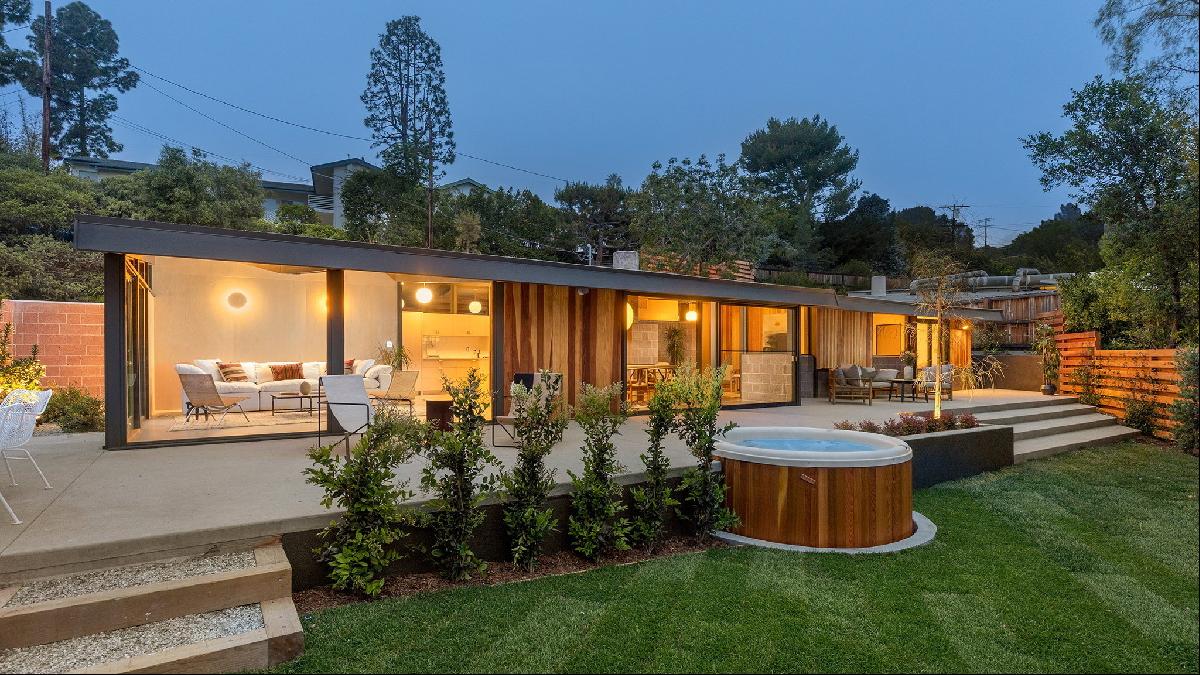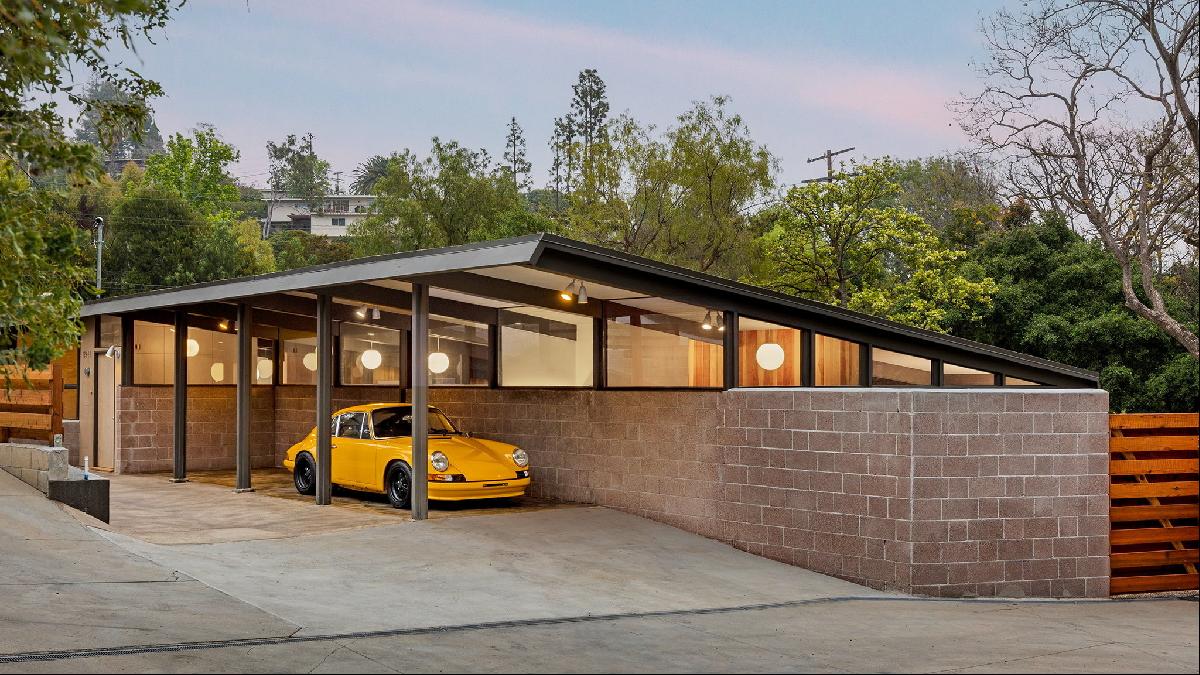
By Edwin Heathcote
In 1947, a group of Hollywood studio session musicians consisting of Ray Siegel, Jules Salkin, Gene Komer, and Leonard Krupnick came together to purchase a plot of land in Brentwood, Los Angeles. Growing dissatisfied with the new, boxy apartment blocks emerging in the city, the friends were determined to construct a green community. They created the Mutual Housing Association and envisioned their development as a place that fostered community, provided amenities, and encouraged a shared lifestyle, with a focus on racial integration and the elimination of prejudice and discrimination. However, their vision offended certain local residents.

The architects A (Archibald) Quincy Jones and Whitney R Smith were hired, along with progressive landscape architect Garrett Eckbo, to oversee the project’s masterplan and design homes tailored to the needs and desires of potential residents. Jones, known for his extensive portfolio of over 5,000 buildings, ranging from homes for celebrities like Gary Cooper to affordable tract housing and suburban plans, integrated landscaping, greenery, and architecture. His experience designing housing for workers in California’s growing wartime arms industries greatly influenced the postwar suburban boom.
Despite not receiving the same level of adulation as contemporaries like Philip Johnson, Eero Saarinen, or Minoru Yamasaki, the designer of the Twin Towers in New York and Jones’ classmate in architecture school, Jones’ enduring quiet modernism has stood the test of time. One of the original Brentwood houses, the three-bedroom Hart Residence, built in 1950, is now on the market for $3.989 million. It has undergone extensive updating and refreshing by HabHouse, a developer specializing in the restoration of historic houses.

This modest yet carefully designed home has been heavily restored using the architects’ original palette of materials and colors. The living/dining/kitchen space features large glazed walls and revolves around a freestanding chunky concrete block and brick fireplace with a unique tubular chimney. On the other side, there is a more private “den” leading to the three bedrooms. Built into a steep slope, the varying levels inside allow for architectural ingenuity, ensuring the bedrooms are not overlooked by neighboring houses and offering views of the landscape through high-level windows.
Jones’ signature style often incorporates walls that do not fully reach the shallow mono-pitch roof, enabling the flow of light throughout the layout. The original bare blockwork walls and built-in plywood storage and cupboard spaces have been faithfully rebuilt, reflecting the spirit of the original design. While these materials were budget-friendly and mass-produced for affordable houses, touches of more luxurious timber, such as built-in wardrobes in the bedroom and on the porch, provide occasional highlights. The car port, functioning as an extension of the roof and supported by simple steel columns, exemplifies a vintage aesthetic, embracing mobility and the Californian sense of freedom instead of concealing it in a garage.

Arguably, the most significant change has been in the price. Once affordable homes for budget-conscious bohemians, these properties now command millions of dollars as the progressive nature of the neighborhood has made it increasingly desirable. Despite the price surge, it remains an extraordinary piece of West Coast modernist history.
Photography: Cameron Carothers / NRT Sotheby’s International Realty
Denial of responsibility! VigourTimes is an automatic aggregator of Global media. In each content, the hyperlink to the primary source is specified. All trademarks belong to their rightful owners, and all materials to their authors. For any complaint, please reach us at – [email protected]. We will take necessary action within 24 hours.

